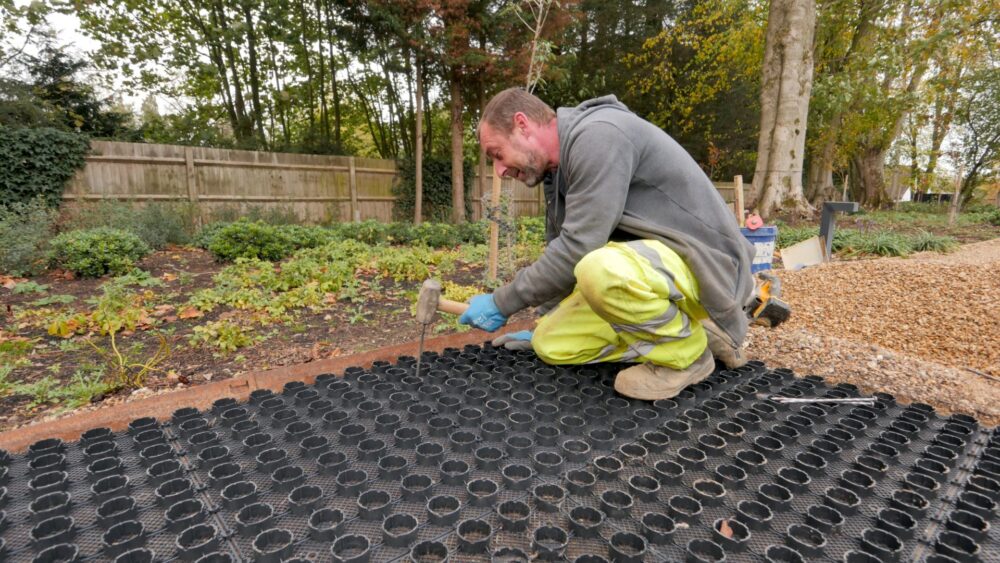While driveway grids are gaining popularity by homeowners, many people still have misconceptions about their durability, aesthetics, and maintenance. With the amount of benefits that driveway grids can offer, miscommunication can make this excellent option seem less viable than it truly is. Here we’re breaking down five of the top myths associated with installing and choosing driveway grids.
Driveway Grids Aren’t Strong Enough for Vehicles
A big concern for people thinking about picking driveway grids is whether they can support the weight of cars, vans, or even larger vehicles. The assumption is because they’re made from plastic, they must be weak and will struggle to hold their shape under heavy weight.
In reality, high-quality driveway grids are engineered for strength. Most grids are made from tough, recycled plastics, which are designed to withstand heavy loads—often up to 40 tonnes per square metre! This allows them to be more than capable of handling the everyday demands of family cars, delivery vans, and even builders trucks. Their structure distributes weight evenly, which reduces the risk of surface cracks that often occur with traditional tarmac or concrete driveways.
They Don’t Look as Good as Traditional Driveways
Practically and functionality aside, aesthetic concerns often defer homeowners from choosing driveway grids. Some people believe that they will look industrial or unattractive, but this couldn’t be further from the truth.
Driveway grids offer a whole range of aesthetic possibilities, allowing homeowners to create a natural-looking driveway using gravel, grass, or a combination of both. The result? A neat, stylish, and eco-friendly driveway that blends seamlessly with its surroundings. Solid concrete driveways can crack and fade over time, so choosing a well-maintained driveway grid system allows for great customisation while retaining its appearance for years to come.
Driveway Grids Require Constant Maintenance
Who wants to invest in a driveway that needs frequent upkeep and maintenance, particularly if filled with gravel or grass? That’s a huge misconception by homeowners regarding the installation of driveway grids. While it’s true that no driveway is completely maintenance-free, driveway grids actually help to reduce upkeep compared to concrete surfaces or loose gravel.
For gravel-filled grids, the structure helps to keep stones in place, preventing the usual spread and loss of material. This means less time spent raking gravel back into position to cover thinning spots. If using a grass-filled system, regular mowing is all that’s required—just like with any other lawn area.
They Don’t Drain Water Properly
One of the biggest misconceptions about driveway grids is that they don’t handle water well and lead to pooling or poor drainage. In reality, driveway grids are specifically designed to improve drainage compared to traditional solid driveways.
A permeable driveway made from driveway grids allows water to filter through naturally. This reduces surface water runoff and helps to prevent localised flooding and pooling. A grid system works with the ground beneath it, which makes the installation of driveway grids a smart choice for anybody wanting to comply with Sustainable Drainage System (SuDS) regulations while also protecting their property from water-related damage.
Driveway Grids Are Difficult to Install
Many homeowners assume that installing a driveway grid system must be a complicated and time-consuming process, but they’re actually one of the easiest driveway solutions to lay.
Most driveway grid systems are crafted using a simple, interlocking design, which allows them to be installed efficiently and securely. The process is straightforward and far less disruptive than pouring concrete or laying heavy paving stones. Once the grids are in place, they can be filled with the homeowners material of choice depending on the desired look.
The Bottom Line
Driveway grids are an innovative and sustainable solution for modern driveways, yet misunderstandings often hold people back from making the switch. The truth is that they are strong, stylish, low-maintenance, and excellent for drainage—all while being easy to install.
If you’ve been hesitant about using driveway grids because of outdated myths and misconceptions, now’s the time to reconsider. Not only can they enhance the appearance of your home, but they also offer long-term durability and environmental benefits.
Looking for a trusted professional to handle your home’s driveway grids? Contact Beauxfort today for an installation quote.



